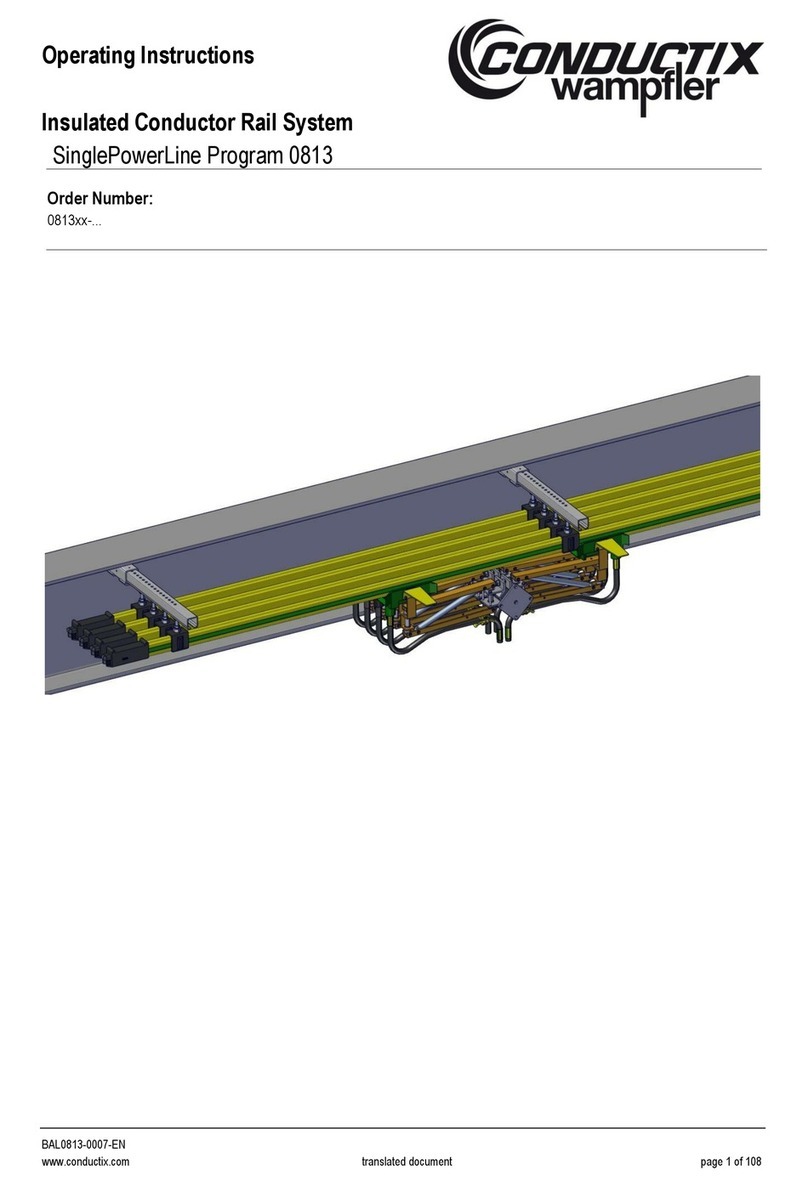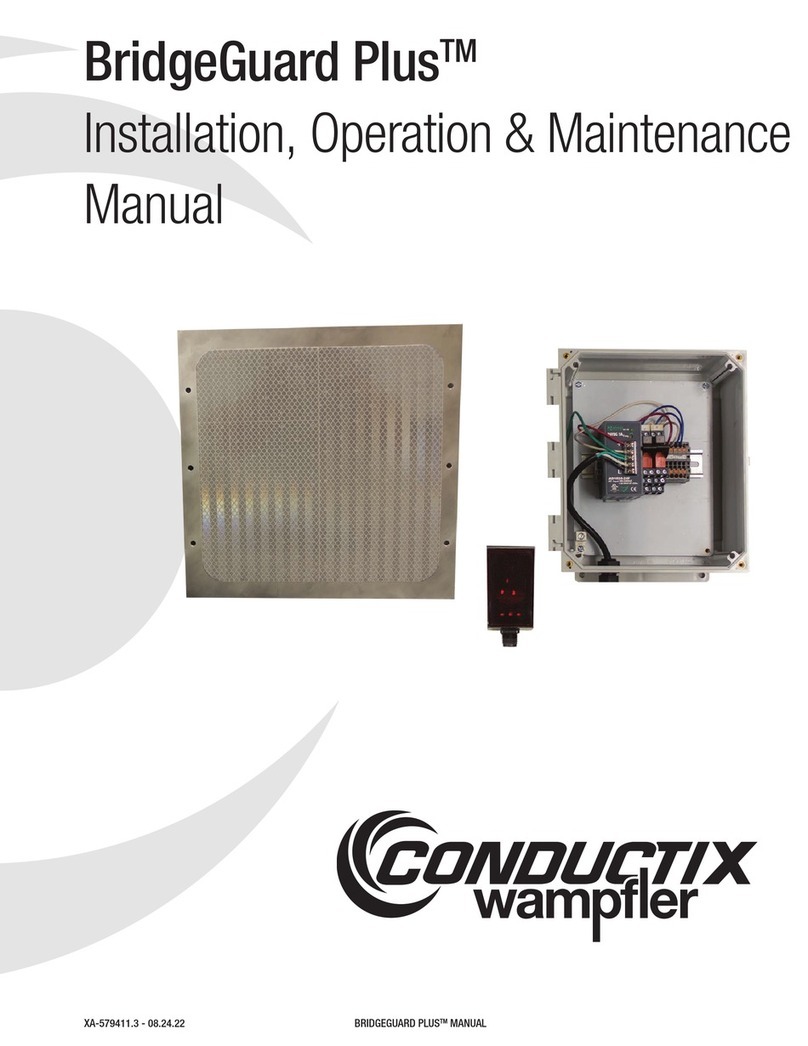BAL0815-0002g-US
www.conductix.us translated document page 3 of 128
3.2.3 Tolerances.................................................................................................................................................................19
3.3 Unsuitable environmental conditions.........................................................................................................................20
4Product Description and Functional Principles .........................................................................................................................21
4.1 Brief description.........................................................................................................................................................21
4.2 Interfaces...................................................................................................................................................................24
4.3 Description of the components..................................................................................................................................25
4.4 Accessories ...............................................................................................................................................................30
4.4.1 Tools and materials ...................................................................................................................................................30
5Transport, Packaging and Storage ...........................................................................................................................................31
5.1 Safety ........................................................................................................................................................................31
5.2 Transport ...................................................................................................................................................................32
5.3 Packaging..................................................................................................................................................................33
5.4 Storage of packaged parts ........................................................................................................................................33
6Installation.................................................................................................................................................................................34
6.1 Safety ........................................................................................................................................................................34
6.2 Provide additional protection against accidental contact at the conductor rail end ...................................................37
6.3 Procedure..................................................................................................................................................................38
6.3.1 Required tools ...........................................................................................................................................................38
6.3.2 Customizing components ..........................................................................................................................................38
6.3.2.1 Trimming conductor rails ...........................................................................................................................................39
6.3.2.2 Making a notch for the PEplus rail ...............................................................................................................................40
6.3.2.3 Making a bend in the conductor rail...........................................................................................................................42
6.3.3 Installing the conductor rail system ...........................................................................................................................45
6.3.3.1 Mounting the hanger clamps .....................................................................................................................................46
6.3.3.2 Mounting the fixed point ............................................................................................................................................49
6.3.3.3 Mounting conductor rail and connectors (on straight routes) ....................................................................................52
6.3.3.4 Mounting conductor rail and connector (in closed slip ring applications) ..................................................................56
6.3.3.5 Expansion unit and expansion module......................................................................................................................61
6.3.3.5.1 Determine the number of expansion modules........................................................................................................ 64
6.3.3.5.2 Mounting the expansion module with a setting aid................................................................................................. 68
6.3.3.5.3 Mounting the expansion module without a setting aid............................................................................................ 76
6.3.3.6 Mounting air gap insulation section ...........................................................................................................................78






























